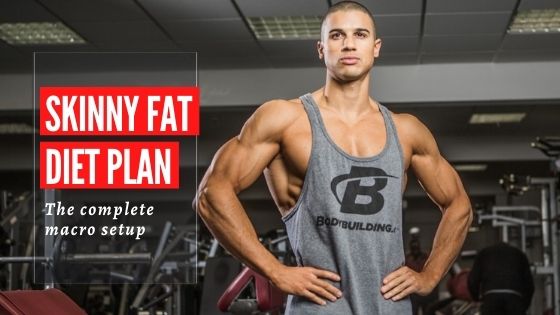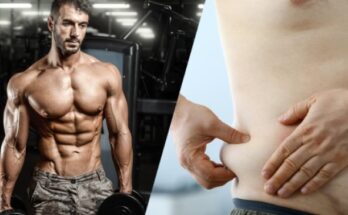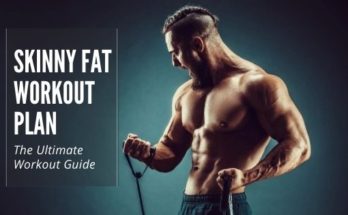How much calorie deficit and protein should be there in my diet to get rid of skinny fat? How to design a diet plan for skinny fat transformation?
People with skinny fat body types usually have confusion regarding nutrition. Here is the ultimate guide for designing a diet plan that will help you in transforming from skinny fat to fit.
I can assure you that if you honestly follow this nutrition guide then you will definitely get the desired results. So let’s get started.
Importance Of Diet In Skinny Fat Transformation
Nobody can transform their physique without a proper diet plan. No matter how disciplined and consistent you are in your training, if your nutrition is not up to the mark, then you won’t make progress.
Skinny fat is the category in which people look thin and still have an ample amount of fat in their bodies. For a successful transformation, they need to build muscle mass and lose fat simultaneously.
Hence, a well-designed diet plan is even more important for skinny fat transformation.
A Three-Step Solution For Skinny Fat Diet
As you know, there is no one size fits in the case of a diet. Everybody has a different requirement based on multiple factors like metabolism, lifestyle, body weight, etc. Hence, here’s a 3 step framework by which you can design your own diet plan for skinny fat transformation.
#1 Find Your BMR & Fat Percentage
BMR (Basal metabolic rate) means how many calories you need to consume to maintain your weight.
To calculate your BMR, just type the BMR calculator on google or click on this link to check.
This will give you your daily calorie requirement to maintain your current body weight based on your activity level. Some people find it very irritating to measure calories and macros.
However, measuring calories is important because this way you can make changes in your diet as per your progress. And if you have serious goals then this becomes even more important to measure your daily calorie intake.
#2 Fix Your Calories First
Bulking or cutting, from where should I start?
This is the common confusion where most skinny fat people and probably you might also stick. To set up daily calories, you have to decide whether you should do bulking (caloric surplus) or cutting (caloric deficit).
Now as a skinny fat body type, if you start bulking then you’ll get more fat also. While with cutting, you may end up looking more skinny as you don’t have much muscle mass.
This is the common dilemma where most people are stuck. But don’t worry, there is a safe third option too. If you set your nutrition smartly, you can do both: gain muscle and lose fat simultaneously.
To achieve this, go on a slight calorie deficit.
As you won’t be able to build muscle with a huge calorie deficit (500+ calories) and you’ll lose fat to become more thin and skinny. Hence, a small calorie deficit is very important for transforming yourself from skinny fat to fit.
A 5% to 20% or 150-500 calories (approx) deficit of maintenance calories are good enough for a successful skinny fat transformation.
As you’ll gain muscle and lose fat at the same time, so don’t get demotivated by looking at your weight. It might remain the same or show a slight change only.
So don’t get obsessed with your weight as a weighing scale is not the appropriate tool to measure progress here. Despite this, check your body fat percentage, your strength and power in the gym, and take weekly selfies to measure your progress.
If your strength is increasing and your body fat percentage is going down, then this means you are on the right track and just keep going.
Read More: How Many Calories To Gain Lean Muscle?
#3 Set up Your Macros
Fixing your calories is not enough, where those calories are coming from, is equally important. You have to smartly balance your macros to make a result-oriented skinny-fat diet plan for yourself.
Protein
When your goal is to gain muscle, protein is the most important macronutrient that you must have to consume in an appropriate amount. Protein is the building block of muscle, hence you won’t be able to build muscle with your maximum potential on a low protein diet.
Despite being in a caloric deficit, enough supply of high-quality protein is necessary to build muscles.
But how much protein do you need for skinny fat transformation?
There are multiple recommendations regarding protein intake. Some say 2 gm per lb of body weight, whereas some recommend as low as 0.5 gm per lb of body weight is enough to build muscle. Well, the best thing is to ignore what people say and listen to science.
0.8-1.2 grams of protein per lb of body weight is enough to build muscle for a successful skinny fat transformation.
Related: 13 High Protein Foods for Lean Muscle Gain.
So for a 140-pound guy, 110-170 grams of protein is enough. Going beyond this range won’t give you any extra benefit. As more is not necessarily the better. In addition, too much protein might cause stomach issues and even cancer in the long run.
In 2018, a study was done at Schoenfeld to see the effects of high versus low protein intake on body composition. They showed that “subjects on a high protein diet (~1g/lb of bodyweight) gained muscle while losing a kg of fat. Whereas, subjects on a low protein diet (~0.4g/lb of bodyweight) still lost fat but some of them also lost muscle or didn’t gain any muscle“.
In fact, according to a meta-analysis published in the Journal of Sports Medicine, “protein intakes at amounts greater than ~1.6 g/kg/day do not further contribute to resistance training-induced gains in FFM (fat-free mass)“.
Hence, eating enough protein is a crucial part of a skinny-fat diet.
Fats
After protein, fat is the second most important macronutrient. It is calorie-dense (1 gm fat = 9 calories) and is needed for various essential body functions like brain functioning, joint health, etc.
20%-30% of your daily caloric need (as you got in step #2) should come from fat.
Here are some major sources of healthy fat – avocado, peanuts, almonds, flaxseeds, chia seeds, coconut oil, fish, olive oil, peanut butter, etc. Make sure to take most of your fat from these sources and avoid unhealthy saturated fats like mayonnaise, roadside junk food, dairy fat, chocolate, etc.
Carbohydrates
Carbohydrates are the primary source of energy. You need enough carbs to fuel your workout. Otherwise, you won’t be left with enough energy to finish your workout.
After removing protein and fats from daily calories, fill the remaining calories with carbs.
In addition, to gain muscle, you simultaneously need to lose fat also. Hence, eat mostly complex carbohydrates (quinoa, brown rice, whole wheat bread, oats, sweet potato, etc.) as they keep releasing energy for a longer time and aid in fat loss too.
A Sample Skinny Fat Diet Plan
First of all, find your BMR which gives the daily calorie requirement to maintain your weight. Now, take a slight calorie deficit of 5% to 20% or 150-500 calories. After this, set up your protein requirement (1 gm/lb of body weight). In the end, fix fat (20-30%) and carbs.
- For example, you have a skinny fat body type and weigh 140 pounds. After calculating your BMR, you got your daily maintenance calories as 2400.
- After setting up a slight calorie deficit of 200, you fix your daily calorie intake to 2200 calories.
- Protein: Starting with 1 g/lb of body weight, take 140 grams of protein daily which makes (140 x 4 = 560 calories).
- Fat: Let’s say, 25% of daily calories which is 550 calories should come from fat. So, 550/9 = 60 (approx.), which means you need 60 gm of fat daily.
- Carbs: Fill the rest of the calories with carbs. That means, 2200-560-550 = 1090. Hence, you need 275 gm of carbs daily.
So your skinny fat diet would include
2200 calories (P – 140g C – 275g, F – 60g)
By taking this as a reference, you can easily set up your diet as per your body measurements.
Optimize Your Diet
One more thing about nutrition is that every physique is different and can respond differently to different stimuli.
Like some people are carb sensitive, they get fat easily by increasing their carb intake. Whereas some have a fast metabolism and their body works like calorie-burning machine. They keep burning calories throughout the day and it becomes easier for them to stay lean.
You don’t know exactly how your body works. Neither you nor a nutritionist can tell what works best for your body. It is the thing you get to know with time.
So once you build the diet plan for skinny fat to ripped transformation, you have to keep optimizing it as per your body response.
For instance, if you are not building muscle then slightly increase your protein intake or not lose fat then reduce your carb or fat intake.
Skinny Fat Supplements
Along with the skinny fat diet, here are the two supplements that can boost your progress.
1. Whey protein: It is a high-quality protein that contains all the amino acids that your body needs to build muscles. Whey protein becomes very handy when you need to complete your protein intake, especially for vegetarians.
Add one serving of whey protein to your post-workout drink. Its absorption rate is the highest and provides all the essential amino acids (with BCAAs).
Read more: Whey Protein Supplements: The Beginner’s Guide
2. Creatine: Creatine is one of the most effective and popular supplements for its strength gain and muscle-building effects. Along with this, it is very affordable too. I recommend you to take 3-5 grams of creatine monohydrate daily to boost the progress of your skinny fat transformation.
Read more: Creatine Supplements: The Beginner’s Guide
In any transformation, training and nutrition are the most important factors. Supplements are just an add-on. They work only when your training and nutrition are up to the mark. So if are not disciplined with your diet and workout then don’t waste money on supplements. They won’t help.
Skinny Fat Diet – SUMMARY
There are thousands of diet and nutrition plans on the internet but they are not built for you. As everybody has a different physique hence you can’t rely on someone else’s diet plan. So this article was to guide you in designing one for yourself. Here’s the takeaway.
- Go on a slight calorie deficit of 5% to 20% or 150-500 calories from your maintenance calories.
- Take enough protein to build muscles – 0.8-1.2 g/lb of bodyweight.
- Take 20-30% of your calories from fat and fill the rest with carbs.
- Try to eat as healthy as possible and add supplements if you want to.
Thanks for reading I hope you found it valuable and got your queries resolved.
Read more related to skinny fat:




